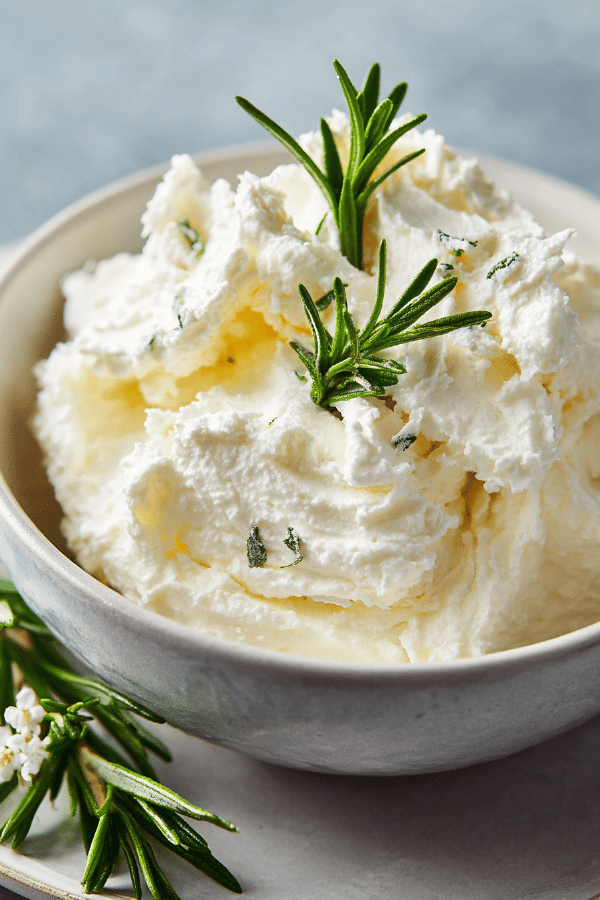Featured Recipe
Ricotta Style Cream Cheese

By Kate
"
A homemade fresh cream cheese using heavy cream, whole milk, and kefir instead of yogurt. Fermented gently, thickened on low heat, and strained through cheesecloth for a creamy texture. Salted lightly, the final product holds for two weeks refrigerated. A subtle tang from kefir adds depth, while slightly reduced dairy quantities prevent over-thickening. Efficient technique with careful heat control ensures no curdling. Expect a soft spread with mild acidity, perfect for vegetarian dishes without gluten, nuts, or eggs.
"
Prep:
6 min
Cook:
28 min
Total:
37 min
Serves:
4 servings
cheese making
homemade
dairy
Introduction
A straightforward, no-nonsense approach to crafting fresh cream cheese. No special cultures or fancy equipment. You’ll use kefir instead of yogurt to vary acidity and brightness. Watch for visual cues—steam curling, bubbling edges, soft skin forming—that tell you when heating’s right. Texture matters; not too thick, not watery. Patience during cooling gives that creamy finish that clings, yet spreads easily. Rooms can be cooler or warmer—adjust times; more fermentation if warmer. Straining is a game of gravity and timing—too quick, you lose richness, too slow, dryness creeps in. Salt anchors flavor and balances freshness. Store chilled, keep airtight, and respect shelf-life to avoid spoilage. Expect tangy, tangy with subtle dairy sweetness, creamy yet light on the tongue. This process demystified, curiosity rewarded.
Ingredients
About the ingredients
Adjust cream and milk proportions based on available fat content. Too little fat—wimpy cheese. Too much—may separate or yield greasy texture. Kefir here replaces yogurt; it brings live cultures, volatile aromas, deeper tang. If using kefir from store-bought with additives, expect milder flavor. Using fresh or homemade fermented kefir intensifies complexity. Salt is essential not just for taste but to strengthen curds, reduce moisture. Substitute salt with maldon flakes for a burst of texture but add after straining. Cheesecloth: multiple layers prevent fine curds escaping but retain enough whey. If unavailable, use a clean cotton tea towel. Avoid paper towels or synthetic fabrics—they risk tearing or imparting unintended tastes.
Method
Technique Tips
Heat low and slow—key to prevent lumping or curd formation. Keep whisking or spatula movements controlled: scraping every few seconds prevents scorching pockets. Visual cues over timer—cream should slowly thicken to coat tools, edges bubble gently. Beware rapid boiling; kills cultures, changes texture. Cooling to approximately body temperature is critical—too hot kills beneficial bacteria; too cold stalls fermentation. Pouring into strainer slowly reduces agitation, preserving curd integrity. Cover during draining to avoid drying and skin formation. Refrigeration time overnight is flexible; extend if draining isn’t enough but beware dryness. Salt before heating dissolves fully and distributes evenly—adding after can cause uneven flavor pockets. Storage in airtight containers prevents odor absorption and crusting. If cheese turns watery, drain more next time or reduce milk quantity slightly.
Chef's Notes
- 💡 Temperature matters. Keep it low with heat. Avoid boiling. Stir consistently. Watch for steam. When you see tiny bubbles, that's a sign. Grab a spatula. Keep scraping the pot. No burning.
- 💡 Drain slowly for best results. Use four layers of cheesecloth. It's about gravity; let it do the work. Cover during draining. No skin formation, prevents dryness. Timing is key; too quick, and you're losing flavor.
- 💡 Want more tang? Adjust the milk and kefir ratio. Swap half the milk for kefir. Watch texture, adjust to taste. Also, consider using fresh kefir for stronger flavors. Store-bought can be milder.
- 💡 Ingredient variations can alter taste. Use different salts. Maldon flakes can replace fine sea salt, but add after straining. Cream and milk ratios matter; balance fat content for texture.
- 💡 For herbs and flavors, add post-draining. Garlic or zest could elevate. Just be light-handed. Too much can overpower. Avoid aggressive flavors; balance is crucial for a mild spread.
Kitchen Wisdom
Why does my cream cheese separate?
Check the heat level during cooking. Too high, it curdles. Stir constantly. Lower heat may work better. Next time, go slower.
Can I store it longer than two weeks?
No, keep within that time frame. Risks grow after a week and a half. Store in airtight, avoid moisture exposure.
What if I can’t find kefir?
You can swap in Greek yogurt but expect slight texture changes. Best result comes from using fresh kefir. Experiment with ratios.
How do I fix a grainy texture?
Lower the cooking temperature. If grainy happens again, check stirring habits too. Avoid heating too fast next time.



